Welcome to our free classical music site

Do you write about classical music? Are you a blogger? Want to team up with Classical Connect? Send us a message, let's talk!

Do you write about classical music? Are you a blogger? Want to team up with Classical Connect? Send us a message, let's talk!
July 5, 2013. Guillaume Dufay. The most famous Franco-Flemish composer of the mid-15th century, Guillaume Dufay was born in 1397, probably on or around July 5. Exactly were he was born is not clear: either around Cambrai, in what is now Northern France, or in Beersel, outside of Brussels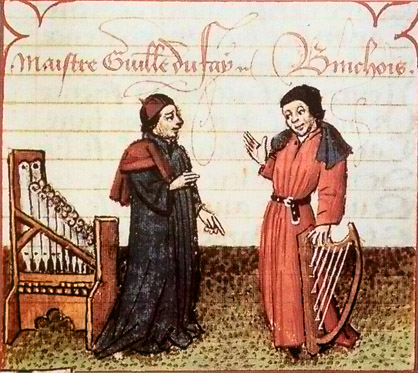 . Dufay is often described as the last composer of the medieval period and the first composer of the Renaissance. He was an illegitimate child of a local priest (it appears that not just popes and cardinals misbehaved in those days, but regular clerics too). His uncle was a canon at the cathedral of Cambrai, and young Guillaume became a chorister there. His talents were noticed early on and he was given formal musical training. In 1420 Dufay moved to Rimini to serve at the palace of Carlo Malatesta, a famous condottiero. There he wrote both church music (masses and motets), and secular, in the form of ballades and rondeaux. The motet Apostolo glorioso was likely written during Dufay’s time in Rimini. It’s sung by the Huelgas Ensemble, Paul Van Nevel conducting (here). Dufay stayed in Malatesta’s service till 1424 and then returned to France, to Cambrai or maybe Laon, whose wine and ladies he celebrated in the rondeau Adieu Ces Bons Vins de Lannoys (Farewell, you fine wines of Laon, farewell ladies, farewell townsfolk, farewell she whom I loved so much, farewell all pleasing joy, farewell all bawdy companions). It’s performed here by The Gothic Voices, with Christopher Page, their artistic director, conducting. In 1426 Dufay went back to Italy, this time into the service of a French Cardinal Louis Aleman, who at that time was a papal legate in Bologna. Two years later Dufay moved to Rome and became a member of the papal choir. He remained in Rome till 1433; by then he was famous all around Europe. He left Rome to join the court of Amédée VIII, the duke of Savoy. In 1434 the duke’s son Louis married Ann of Cyprus, and many guests were invited to the wedding. One of them was the Philip III, the duke of Burgundy. In duke’s retinue was Gilles Binchois, another famous composer. Apparently Dufay and Binchois met on that occasion, at least according to Martin le Franc, the same le Franc who coined the term La Contenance Angloise to describe the style of John Dunstaple, another famous contemporary. The picture above is of Guillaume Dufay (on the left) and Gilles Binchois.
. Dufay is often described as the last composer of the medieval period and the first composer of the Renaissance. He was an illegitimate child of a local priest (it appears that not just popes and cardinals misbehaved in those days, but regular clerics too). His uncle was a canon at the cathedral of Cambrai, and young Guillaume became a chorister there. His talents were noticed early on and he was given formal musical training. In 1420 Dufay moved to Rimini to serve at the palace of Carlo Malatesta, a famous condottiero. There he wrote both church music (masses and motets), and secular, in the form of ballades and rondeaux. The motet Apostolo glorioso was likely written during Dufay’s time in Rimini. It’s sung by the Huelgas Ensemble, Paul Van Nevel conducting (here). Dufay stayed in Malatesta’s service till 1424 and then returned to France, to Cambrai or maybe Laon, whose wine and ladies he celebrated in the rondeau Adieu Ces Bons Vins de Lannoys (Farewell, you fine wines of Laon, farewell ladies, farewell townsfolk, farewell she whom I loved so much, farewell all pleasing joy, farewell all bawdy companions). It’s performed here by The Gothic Voices, with Christopher Page, their artistic director, conducting. In 1426 Dufay went back to Italy, this time into the service of a French Cardinal Louis Aleman, who at that time was a papal legate in Bologna. Two years later Dufay moved to Rome and became a member of the papal choir. He remained in Rome till 1433; by then he was famous all around Europe. He left Rome to join the court of Amédée VIII, the duke of Savoy. In 1434 the duke’s son Louis married Ann of Cyprus, and many guests were invited to the wedding. One of them was the Philip III, the duke of Burgundy. In duke’s retinue was Gilles Binchois, another famous composer. Apparently Dufay and Binchois met on that occasion, at least according to Martin le Franc, the same le Franc who coined the term La Contenance Angloise to describe the style of John Dunstaple, another famous contemporary. The picture above is of Guillaume Dufay (on the left) and Gilles Binchois.
In 1435 Dufay returned to the papal court, except this time not in Rome but in Florence, where Pope Eugene IV was driven to by an insurrection in Rome. It was in Florence that Dufay composed one of his most famous motets, Nuper Rosarum Flores ("Recently Flowers of Roses"). It was written for the consecration of the Florence cathedral, Santa Maria del Fiore (Saint Mary of the Flowers) on March 25, 1436. The great architect Filippo Brunelleschi just completed the magnificent cupola, and the Pope himself presided over the festivities. Nuper Rosarum Flores is performed by the Huelgas Ensemble under the baton Paul Van Nevel (here).
Dufay lived a long life (he died in 1474), during which he composed many motets, chants, and masses, among them one on the tune of L'homme armé, a very popular song of the time. Whether he composed the tune itself is not clear, but his was the first mass to be based on it. Forty other settings exist, among them masses composed by Josquin des Prez, Cristóbal de Morales, and Giovanni Pierluigi da Palestrina. We’ll come back to this unique song at a later time.
PermalinkJuly 29, 2013. From recent uploads: George Vatchnadze and Ran Jia. Georgian-American pianist George Vatchnadze is an established artist recognized as one of the most interesting musicians of his generation. He has appeared with orchestras and in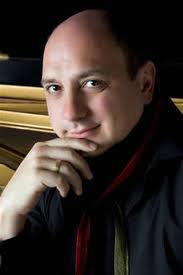 recitals throughout the United States, Canada, Great Britain, Netherlands, Italy, Israel, Russia, and other countries. He has performed at the Hollywood Bowl, Ravinia, Stresa, and Rotterdam Philharmonic’s Gergiev Festivals, and other venues. In 1997 Mr. Vatchnadze made a sensational recital debut at the prestigious Edinburgh International Music Festival and received the “Herald Angel Award” presented by the Scottish Herald newspaper. In 1999 Mr. Vatchnadze made his New York recital debut at the Alice Tully Hall. Critic and writer Faubion Bowers wrote in American Record Guide: “Vatchnadze is a consummate artist, now at the height of his musical and intellectual powers. He can do absolutely anything he wants at the piano. He commands delicate pianissimi, massive diapasons and everything in between”. In 20111, Mr. Vatchnadze joined the DePaul faculty as Associate Professor of Piano. Mr. Vatchnadze plays Robert Schumann’s Kinderszenen (Scenes from Childhood), Op. 15. It was written in 1838, a difficult period in Schumann’s life: he was separated from his fiancée Clara Wieck, all the while trying to convince her stubborn father to allow them to marry. Kinderszenen is a collection of 13 seemingly simple but emotionally complex pieces. Mr. Vatchnadze’s performance is romantic but probing, a rare but highly satisfying combination. You can listen to it here.
recitals throughout the United States, Canada, Great Britain, Netherlands, Italy, Israel, Russia, and other countries. He has performed at the Hollywood Bowl, Ravinia, Stresa, and Rotterdam Philharmonic’s Gergiev Festivals, and other venues. In 1997 Mr. Vatchnadze made a sensational recital debut at the prestigious Edinburgh International Music Festival and received the “Herald Angel Award” presented by the Scottish Herald newspaper. In 1999 Mr. Vatchnadze made his New York recital debut at the Alice Tully Hall. Critic and writer Faubion Bowers wrote in American Record Guide: “Vatchnadze is a consummate artist, now at the height of his musical and intellectual powers. He can do absolutely anything he wants at the piano. He commands delicate pianissimi, massive diapasons and everything in between”. In 20111, Mr. Vatchnadze joined the DePaul faculty as Associate Professor of Piano. Mr. Vatchnadze plays Robert Schumann’s Kinderszenen (Scenes from Childhood), Op. 15. It was written in 1838, a difficult period in Schumann’s life: he was separated from his fiancée Clara Wieck, all the while trying to convince her stubborn father to allow them to marry. Kinderszenen is a collection of 13 seemingly simple but emotionally complex pieces. Mr. Vatchnadze’s performance is romantic but probing, a rare but highly satisfying combination. You can listen to it here.
The 24-year old pianist Ran Jia is regarded by many as a musician with unusual natural abilities. Born in Chengdu, the capital of the Chinese province of Sichuan, Ms. Jia began studying piano at the age of three and made her solo debut in 1995, at the age of six. In November 2005, she made her debut at Lincoln Center’s Alice Tully Hall performing Mozart’s Piano Concerto No. 21 in C major with the Orchestra of St. Luke’s. In the summer of 2008 Ms. Jia made a European recital debut at the Klavierfestival Ruhr playing two Schubert sonatas to great acclaim. In 2009 Ms. Jia made her Vancouver Symphony Orchestra subscription debut, performing Mozart’s Piano Concerto No.12. The following summer she toured the southern cities of China, performing Camille Saint-Saëns’s Concerto No. 2 with the Shenzhen Symphony Orchestra. In the 2011-12 seasons, Ms. Jia appeared at the Miami International Piano Festival, the Gilmore International Keyboard Festival and in recital in Dusseldorf, Munich, and Ludwigshafen. Ran Jia studied with Gary Graffman at the Curtis Institute of Music in Philadelphia. Ms. Jia is currently enrolled at the Music Academy in Cologne, studying under Nina Tichman. Ms. Jia performs Franz Schubert’s Piano Sonata No. 18 in G major, D. 894. The sonata was completed in 1826 and published a year later; it’s the last one to be published during Schubert’s lifetime. The English pianist Imogen Cooper called D. 894 Schubert’s “completely serene” sonata, and Ms. Jia gives every theme enough space and time to fully develop (here).
In November 2005, she made her debut at Lincoln Center’s Alice Tully Hall performing Mozart’s Piano Concerto No. 21 in C major with the Orchestra of St. Luke’s. In the summer of 2008 Ms. Jia made a European recital debut at the Klavierfestival Ruhr playing two Schubert sonatas to great acclaim. In 2009 Ms. Jia made her Vancouver Symphony Orchestra subscription debut, performing Mozart’s Piano Concerto No.12. The following summer she toured the southern cities of China, performing Camille Saint-Saëns’s Concerto No. 2 with the Shenzhen Symphony Orchestra. In the 2011-12 seasons, Ms. Jia appeared at the Miami International Piano Festival, the Gilmore International Keyboard Festival and in recital in Dusseldorf, Munich, and Ludwigshafen. Ran Jia studied with Gary Graffman at the Curtis Institute of Music in Philadelphia. Ms. Jia is currently enrolled at the Music Academy in Cologne, studying under Nina Tichman. Ms. Jia performs Franz Schubert’s Piano Sonata No. 18 in G major, D. 894. The sonata was completed in 1826 and published a year later; it’s the last one to be published during Schubert’s lifetime. The English pianist Imogen Cooper called D. 894 Schubert’s “completely serene” sonata, and Ms. Jia gives every theme enough space and time to fully develop (here).
PermalinkJuly 22, 2013. Enrique Granados and Cristóbal de Morales. Enrique Granados, one of the most important Spanish composer’s of the new era, was born on July 27, 1867 in Lérida, Catalonia. We wrote, rather extensively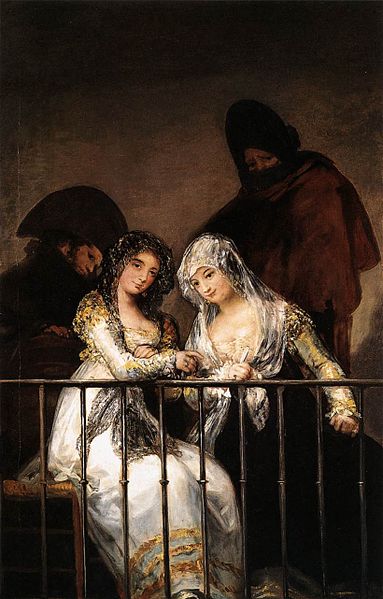 , about Granados a year ago, so to celebrate his birthday we’ll present a couple of pieces that were uploaded since then. Both come from Goyescas, Op. 11, a suite inspired by the painting of Francisco Goya and probably Granados’s most significant (and difficult) composition. First, El amor y la muerte (Balada) or Ballad of Love and Death, the fifth piece of the suite. It is performed by Ruti Abramovitch (here). El pelele (The Straw Man) was written in 1914, later than the original six pieces of Goyescas. Granados gave it a subtitle Escena goyesca and it’s usually performed as part of the suite. Here it is played by the Spanish pianist Carlos Gallardo.
, about Granados a year ago, so to celebrate his birthday we’ll present a couple of pieces that were uploaded since then. Both come from Goyescas, Op. 11, a suite inspired by the painting of Francisco Goya and probably Granados’s most significant (and difficult) composition. First, El amor y la muerte (Balada) or Ballad of Love and Death, the fifth piece of the suite. It is performed by Ruti Abramovitch (here). El pelele (The Straw Man) was written in 1914, later than the original six pieces of Goyescas. Granados gave it a subtitle Escena goyesca and it’s usually performed as part of the suite. Here it is played by the Spanish pianist Carlos Gallardo.
Cristóbal de Morales was at least as important to the development of the Spanish Renaissance music as Granados was to the modern era. Morales was born in Seville around 1500. He was trained as a choirboy in the magnificent (and then just completed) Cathedral of the city. Around 1526 he became the choirmaster at the Cathedral of Ávila, and later, from 1529 to 1532, held the same position in Plasencia. Apparently, he was an outstanding singer. At least since the Spanish Pope Alexander VI (born Rodrigo Borgia), Rome was partial to Spanish singers, and in 1535 the Pope Paul III made sure that Morales was accepted at the papal choir. While in Rome, where he stayed till 1545, he also worked as an organist. We don’t know when Morales started composing, but he did a lot of it while in Rome (a compendium of his work was published in 1544). He also stayed in touch with other composers working in the city. Morales became quite famous while still in Italy. That didn’t help him in securing a job in Rome, however, and in 1545 Morales moved back to Spain to become the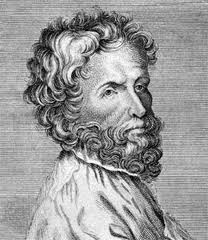 choirmaster at the Cathedral of Toledo. In Spain he was considered the most important composer of the time. Even later, in the 18th century, Andrea Adami da Bolsena, the famous castrato and music historian, declared him the most significant composer between Josquin des Prez and Palestrina. Morales died in 1553, probably in October, either in Malaga or in Marchena, near Seville.
choirmaster at the Cathedral of Toledo. In Spain he was considered the most important composer of the time. Even later, in the 18th century, Andrea Adami da Bolsena, the famous castrato and music historian, declared him the most significant composer between Josquin des Prez and Palestrina. Morales died in 1553, probably in October, either in Malaga or in Marchena, near Seville.
Morales’s works influenced Palestrina, who based one of his masses on a motet by Morales. He also affected another great Spaniard, Tomás Luis de Victoria. Among Morales’s extant work are masses, motets and magnificats. Here is a wonderful motet, Parce mihi, Domine, it’s performed by the Monteverdi Choir, John Eliot Gardiner conducting. And here are two parts, Introitus and Kyrie from his Missa pro defunctis a 5 (a Requiem Mass), published in Missarum Liber Secundus in 1544, while he was still in Rome. They are performed by the Spanish ensemble Musica Ficta, Raúl Mallavibarrena conducting.
PermalinkJuly 15, 2013. John Dunstaple. With the dearth of notable birthdays this week, we again turn back to composers of years past. John Dunstaple was one of the first in a long and quite remarkable line of Renaissance composers who made England a major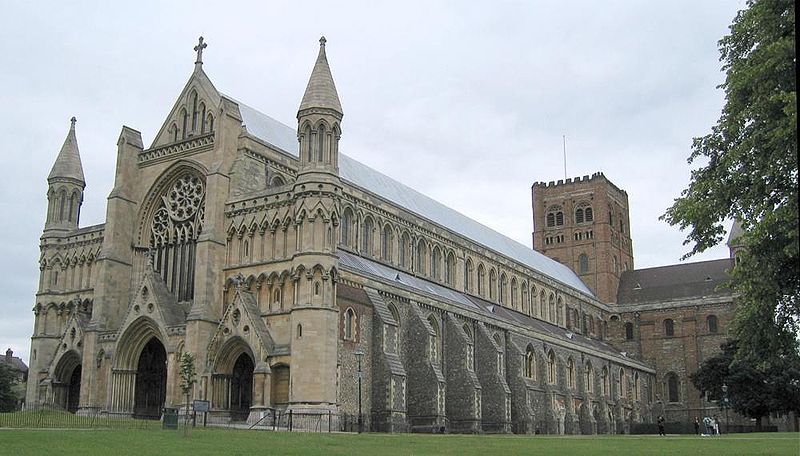 center of European music for almost two centuries. Duntsaple was born around 1390, around the same time as the famous Burgundian, Guillaume Dufay. In England, Dunstaple was followed by Robert Morton (born around 1430), Walter Lambe (1453), John Taverner (1490), Thomas Tallis (1505), William Byrd (1540), John Dowland John Bull (both born in 1563), and Orlando Gibbons (1583). These are the more famous names; there were many more, both known and unknown: the musical culture of Tudor and Jacobean England flourished as nowhere else, except probably the Franco-Flemish one in what is now northern France, Belgium and the Netherlands. Dunstaple was probably born in the town of Dunstable; the year of his birth is unknown, 1390 is a conjecture based on the timing of some compositions. He served in the court of John of Lancaster, a son of king Henry IV and a brother of Henry V. John led the British forces in many battles of the Hundred Year War with France (he was the one to capture Joan of Arc) and for a number of years was the Governor of Normandy. It’s likely that Dunstaple stayed with John in Normandy. From there his music spread over the continent. Considering that a major war was raging in France, that in itself is quite remarkable. Dunstaple’s influence was very significant, especially affecting musicians of the highly developed Burgundian school; the reason was both musical and political, as Burgundy was allied with England in its war against France. The poet Martin Le Franc, a contemporary of Dunstaple, came up with the term La Contenance Angloise, which could be loosely translated as “English manner” and said that it affected the two greatest composers of Burgundy, Guillaume Dufay and Gilles Binchois. Le Franc wrote in 1442, by then Dunstaple was back in England, serving in the court of Humphrey of Lancaster, John’s brother. In addition to writing music he also studied mathematics, was an astronomer and astrologer. While not a cleric, he was associated with St Albans Abbey (see picture above). He died in 1453. When, during the reign of Henry VIII England became Protestant, many monasteries – the main keepers of musical tradition – were "dissolved" and their libraries ruined. Most of the English manuscripts of Dunstaple’s music were lost. Fortunately, many copies remained in Italy and Germany – evidence of Dunstaple’s international fame. About 50 compositions are currently attributed to him (these attributions are not firm often challenged). Among these are two masses, a number of sections from different masses, and many motets. We’ll hear a famous motet Veni sancte spiritus. It’s performed by the Hilliard Ensemble, Paul Hillier conducting. The same ensemble performs a motet Salve Regina Misericordiae (here). Finally, the Laudantes Consort under the direction of Guy Janssens performs another hymn to Mary, the Magnificat.Permalink
center of European music for almost two centuries. Duntsaple was born around 1390, around the same time as the famous Burgundian, Guillaume Dufay. In England, Dunstaple was followed by Robert Morton (born around 1430), Walter Lambe (1453), John Taverner (1490), Thomas Tallis (1505), William Byrd (1540), John Dowland John Bull (both born in 1563), and Orlando Gibbons (1583). These are the more famous names; there were many more, both known and unknown: the musical culture of Tudor and Jacobean England flourished as nowhere else, except probably the Franco-Flemish one in what is now northern France, Belgium and the Netherlands. Dunstaple was probably born in the town of Dunstable; the year of his birth is unknown, 1390 is a conjecture based on the timing of some compositions. He served in the court of John of Lancaster, a son of king Henry IV and a brother of Henry V. John led the British forces in many battles of the Hundred Year War with France (he was the one to capture Joan of Arc) and for a number of years was the Governor of Normandy. It’s likely that Dunstaple stayed with John in Normandy. From there his music spread over the continent. Considering that a major war was raging in France, that in itself is quite remarkable. Dunstaple’s influence was very significant, especially affecting musicians of the highly developed Burgundian school; the reason was both musical and political, as Burgundy was allied with England in its war against France. The poet Martin Le Franc, a contemporary of Dunstaple, came up with the term La Contenance Angloise, which could be loosely translated as “English manner” and said that it affected the two greatest composers of Burgundy, Guillaume Dufay and Gilles Binchois. Le Franc wrote in 1442, by then Dunstaple was back in England, serving in the court of Humphrey of Lancaster, John’s brother. In addition to writing music he also studied mathematics, was an astronomer and astrologer. While not a cleric, he was associated with St Albans Abbey (see picture above). He died in 1453. When, during the reign of Henry VIII England became Protestant, many monasteries – the main keepers of musical tradition – were "dissolved" and their libraries ruined. Most of the English manuscripts of Dunstaple’s music were lost. Fortunately, many copies remained in Italy and Germany – evidence of Dunstaple’s international fame. About 50 compositions are currently attributed to him (these attributions are not firm often challenged). Among these are two masses, a number of sections from different masses, and many motets. We’ll hear a famous motet Veni sancte spiritus. It’s performed by the Hilliard Ensemble, Paul Hillier conducting. The same ensemble performs a motet Salve Regina Misericordiae (here). Finally, the Laudantes Consort under the direction of Guy Janssens performs another hymn to Mary, the Magnificat.Permalink
July 8, 2013. Ottorino Respighi and Giovanni Battista Sammartini. Ottorino Respighi, one of the most interesting Italian composers of the early 20th century, was born on July 9, 1879 in Bologna. We’ve written about him rather extensively in the past, so to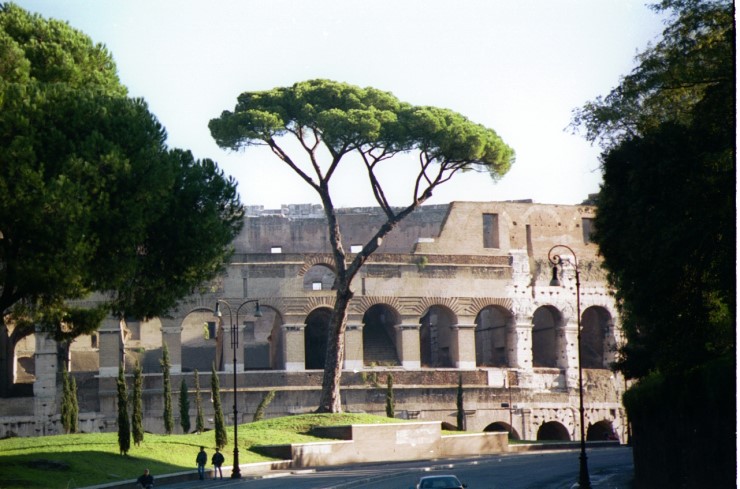 celebrate his birthday today we’ll present one of his best-known compositions, Pines of Rome, which was premiered in December of 1924. Pines is the second piece in the “Roman Trilogy” (Fountains of Rome, the first one, was composed in 1917; Roman Festivals, of 1928, concluded the cycle). All three sections of the Trilogy are written as a free-form symphonic tone poem, the style popular since the times of Liszt. Pines is programmatic: Rome is famous for its pine trees, and the four parts of the Pines depict them in four different areas of Rome. First is Pines of the Villa Borghese, then Pines Near a Catacomb (Respighi didn’t indicate which ones in particular he had in mind); Pines of the Janiculum follow (Janiculum is a hill in Trastevere, across the Tiber from the ancient part of Rome and next to the Vatican. The top of the hill, with its somewhat run-down little park, affords magnificent views of the city). The final part of Pines of Rome is called Pines of the Appian Way and, according to Respighi, represents a victorious legion marching on this ancient road toward Rome. We’ll hear Pines of Rome in the performance by the Chicago Symphony orchestra, Fritz Reiner conducting (Reiner gets the best out of the marvelous Chicago brass in the Appian Way section).
celebrate his birthday today we’ll present one of his best-known compositions, Pines of Rome, which was premiered in December of 1924. Pines is the second piece in the “Roman Trilogy” (Fountains of Rome, the first one, was composed in 1917; Roman Festivals, of 1928, concluded the cycle). All three sections of the Trilogy are written as a free-form symphonic tone poem, the style popular since the times of Liszt. Pines is programmatic: Rome is famous for its pine trees, and the four parts of the Pines depict them in four different areas of Rome. First is Pines of the Villa Borghese, then Pines Near a Catacomb (Respighi didn’t indicate which ones in particular he had in mind); Pines of the Janiculum follow (Janiculum is a hill in Trastevere, across the Tiber from the ancient part of Rome and next to the Vatican. The top of the hill, with its somewhat run-down little park, affords magnificent views of the city). The final part of Pines of Rome is called Pines of the Appian Way and, according to Respighi, represents a victorious legion marching on this ancient road toward Rome. We’ll hear Pines of Rome in the performance by the Chicago Symphony orchestra, Fritz Reiner conducting (Reiner gets the best out of the marvelous Chicago brass in the Appian Way section).
It comes as a surprise that we don’t know the date of birth of another Italian composer, Giovanni Battista Sammartini. It’s especially strange because Sammartini was born in 1700 in Milan – not in the Middle Ages in some small village in the backward Basilicata. Milan at that time was administered by the Austrians, well known for their meticulous bureaucracy. Sammartini’s father, Alexis Saint-Martin, was French and a professional oboist. He gave Giovanni his first musical lessons. By the age of 20, Sammartini was playing oboe in the Teatro Regionale Ducal. When Sammartini was about 25, he was appointed the music master (maestro di cappella) at the famous Basilica of Sant'Ambrogio. He held this position for the rest of his life. As composer of church music, he soon became famous outside of Italy. Many musicians came to Milan to study with him, the most famous being Christoph Willibald Gluck. Sammartini didn’t confine his creativity exclusively to liturgical music; eventually he extended it to other musical forms, especially symphony and chamber music. He composed at least 68 symphonies (that’s the number recovered in the archives of publishing houses) and is credited as an innovator of this form. As a symphonist, he influenced Johann Christian Bach, and even Haydn and Mozart (young Mozart met him in Milan while visiting the city in 1770). In addition to symphonies, Sammartini wrote four operas and many sonatas for violin, cello, flute, and keyboard. Soon after Sammartini’s death in 1775 his music was all but forgotten, and remained such for the next century and a half. In the early 20th century the Italians’ interest in their musical heritage reawakened (Ottorino Respighi did much to uncover the forgotten music of Vivaldi, Monteverdi, and Marcello). In 1913 much of Sammartini’s music was rediscovered in the archives. His music has remained quite popular ever since. Here is his lovely Cello Sonata in G Major. It’s performed by the great cellist Leonard Rose. Leonid Hambro is on the piano.Permalink
July 1, 2013. Gustav Mahler. Symphony no. 1. This week we’re celebrating the 153rd birthday of the great Austrian composer. Mahler was born on July 7 in Bohemia, then part of the Austrian Empire. His Jewish, German speaking family moved to the town of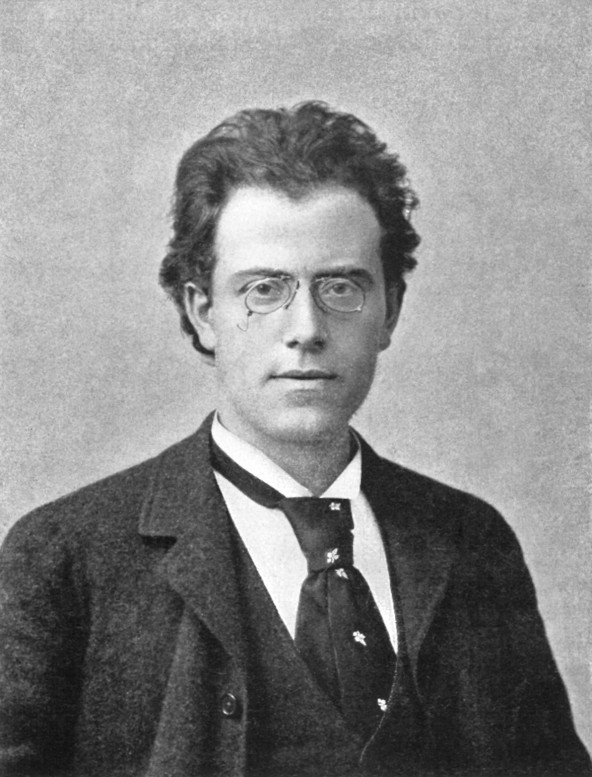 Iglau (now called Jihlava) when Gustav was an infant. Mahler started playing piano at his grandparent’s house when he was four. An inattentive student at a local school, he was sent to Prague by his father, who believed that Gustav needed a good education. Gustav was unhappy there and soon returned to Iglau. In 1875, he was accepted at the piano department of the Vienna conservatory. There he also took composition classes (none of his early pieces survive). One of his friends at the conservatory was the future songwriter Hugo Wolf. Mahler revered the music of Anton Bruckner and attended several of his lectures. In 1877, Mahler and a friend, Rudolf Krzyzanowski, went to the premier of Bruckner’s Third symphony, which turned into a disaster. The designated conductor, Johann von Herbeck, had died a month before the premier, so Bruckner, a poor conductor himself, had to lead the orchestra. Most of the public stormed out of the hall, and by the end of the performance even the musicians left the stage. In an attempt to mitigate the blow, Mahler and Krzyzanowski prepared a piano duo version of the symphony and presented it to Bruckner. (The devastated Bruckner, easily affected by criticism, set up to rewrite the symphony and created two more versions, one in 1877, and another one in 1888-89). Throughout Mahler’s entire career, Bruckner was a strong influence (to a large extent, so was Wagner).
Iglau (now called Jihlava) when Gustav was an infant. Mahler started playing piano at his grandparent’s house when he was four. An inattentive student at a local school, he was sent to Prague by his father, who believed that Gustav needed a good education. Gustav was unhappy there and soon returned to Iglau. In 1875, he was accepted at the piano department of the Vienna conservatory. There he also took composition classes (none of his early pieces survive). One of his friends at the conservatory was the future songwriter Hugo Wolf. Mahler revered the music of Anton Bruckner and attended several of his lectures. In 1877, Mahler and a friend, Rudolf Krzyzanowski, went to the premier of Bruckner’s Third symphony, which turned into a disaster. The designated conductor, Johann von Herbeck, had died a month before the premier, so Bruckner, a poor conductor himself, had to lead the orchestra. Most of the public stormed out of the hall, and by the end of the performance even the musicians left the stage. In an attempt to mitigate the blow, Mahler and Krzyzanowski prepared a piano duo version of the symphony and presented it to Bruckner. (The devastated Bruckner, easily affected by criticism, set up to rewrite the symphony and created two more versions, one in 1877, and another one in 1888-89). Throughout Mahler’s entire career, Bruckner was a strong influence (to a large extent, so was Wagner).
Mahler graduated from the Conservatory in 1878. Two years later he got his first conducting job, in a small theater near Linz. A year later he was hired by the major theater in Laibach (now Ljubljana, the capital of Slovenia). There Mahler conducted his first important opera, Verdi’s Il Trovatore. During the next several years he moved from one provincial town to another, working as a conductor in small opera theaters. His breakthrough came in 1886, when Mahler received a six-year contract with the Leipzig Opera, and also a position with the Neues Deutsches Theater in Prague. In Prague, the German theater was supposed to compete with the National Theater, where Smetana’s operas were all the rage, so Mahler staged operas by Mozart and Wagner. Alas, his association with the theater was brief: a personal conflict forced him to quit the same year. Things were not much easier in Leipzig, where the famous Arthur Nikisch was not happy with the arrival of the talented rival. In Leipiz Mahler successfully staged Wagner’s The Ring cycle, and operas by Carl Maria von Weber, whose grandson he befriended.
It was during that time that Mahler composed his first symphony. It was not his first work: he composed the original version of the Songs of a Wayfarer in 1885 and some other songs earlier, although he didn’t publish them till some years later. It was, though, his first attempt at a symphonic work. And what a momentous attempt! It’s hard to think of another first symphony of such impact, originality and audacity. Mahler was not afraid to mix together things high and low, earthly and ethereal. He used tunes from German folk songs, quotes from his own Wayfarer cycles, the unexpectedly funereal Frère Jacques and the sounds of a Klezmer band. He wrote music of naked emotions that would’ve sounded vulgar in a different context, and then created grandiose developments that elevate it to nearly religious fervor. And by the force of his genius he melded all this material into 55 minutes of music of tremendous intensity. The symphony was premièred at the Vigadó Concert Hall, Budapest in 1889, with Mahler conducting, but was poorly received. The first two performances (the second was given at Hamburg in October 1893, also with Mahler on the podium) contained an extra movement, Blumine, which Mahler eventually took out. All later versions contain four movements. We’ll hear it in the performance of the Chicago Symphony, Sir Georg Solti conducting.
Permalink